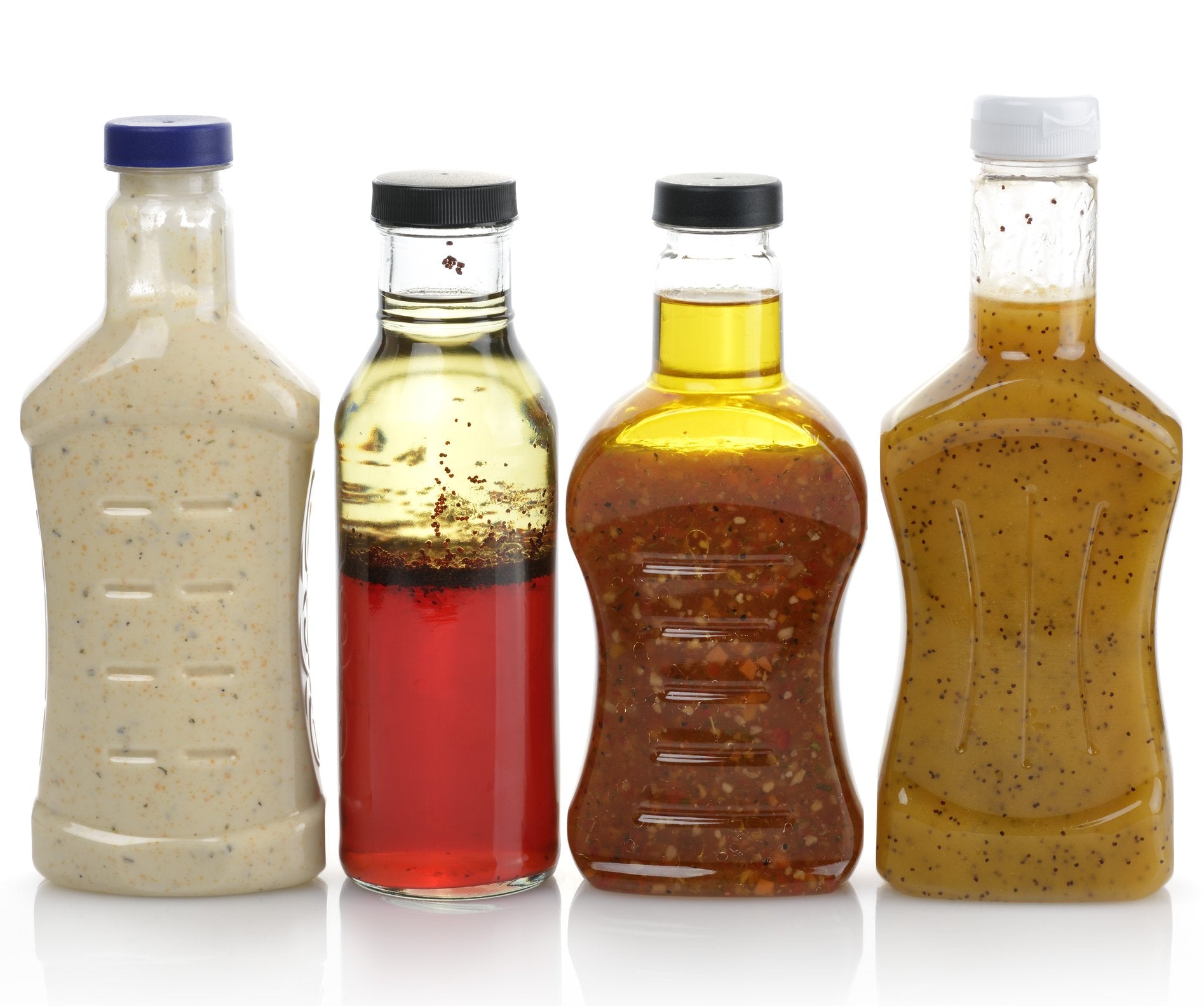The Magic of Emulsifier In Food Made Simple
Wiki Article
Why It Is Required to Include an Emulsifier in Food for Optimal Preference and High Quality
Emulsifiers play an important role in food manufacturing by guaranteeing the steady mixing of immiscible fluids, such as oil and water. They lower interfacial stress, which avoids the separation of components and adds to a consistent structure. This not just boosts mouthfeel but likewise influences flavor understanding. Understanding the need of emulsifiers reveals much deeper understandings right into their feature and relevance in culinary applications. What ramifications does this have for food technology and consumer choices?Comprehending Emulsifiers: The Fundamentals
Emulsifiers play a vital role in food scientific research, working as agents that facilitate the blending of 2 immiscible fluids, such as oil and water. These compounds possess both hydrophilic (water-attracting) and hydrophobic (water-repelling) residential or commercial properties, which enable them to maintain emulsions. Typical emulsifiers include lecithin, found in egg yolks and soybeans, and mono- and diglycerides, acquired from fats.The Scientific research Behind Emulsification
When 2 immiscible liquids are combined, the process of emulsification becomes fundamental for accomplishing a stable combination. Emulsification includes dispersing one fluid within an additional, typically oil in water or vice versa. This process occurs through mechanical frustration, which breaks the bigger beads into smaller sized ones, therefore raising the surface. Nonetheless, without the presence of emulsifiers, these droplets would coalesce, bring about splitting up.Emulsifiers are particles with hydrophilic (water-attracting) and hydrophobic (water-repelling) residential properties. Their special framework enables them to minimize the interfacial tension between the two immiscible liquids, supporting the solution. This stabilization protects against separation and enhances the harmony of structure and flavor. The interactions at the molecular degree are essential for keeping the honesty of the emulsion, making certain that foodstuff preserve their desired uniformity and taste. Comprehending this science is significant for food scientists and makers in producing top notch foodstuff.
Kinds of Emulsifiers Used in Food
The sorts of emulsifiers made use of in food can be broadly classified right into artificial and natural selections. Typical food emulsifiers, such as lecithin and mono- and diglycerides, play a crucial duty in enhancing food security and structure. Comprehending these differences is essential for appreciating just how emulsifiers add to the overall high quality of food.Synthetic vs. natural Emulsifiers
While both artificial and all-natural emulsifiers serve the essential duty of supporting blends in food items, their beginnings and attributes differ considerably. All-natural emulsifiers, stemmed from plant or animal sources, consist of lecithin, casein, and particular periodontals. They are often viewed as healthier options, interesting customers seeking clean-label items. In contrast, artificial emulsifiers, such as mono- and diglycerides, are chemically engineered and may offer enhanced security and functionality in a broader variety of applications. These synthetic options can be extra cost-effective and offer regular high quality. Nevertheless, they might evoke skepticism among health-conscious customers. Ultimately, the selection between artificial and natural emulsifiers relies on the preferred top qualities of the food item, consisting of structure, taste, and shelf-life stability.Typical Food Emulsifiers
Emulsifiers play a vital role in the food market, making certain the stability and appearance of various items. Common food emulsifiers consist of lecithin, mono- and diglycerides, and polysorbates. Emulsifier In Food. Lecithin, stemmed from sources like soybeans and egg yolks, is commonly made use of in baked products and delicious chocolates. Mono- and diglycerides, commonly acquired from vegetable oils, boost the creaminess of margarine and ice lotion. Polysorbates, artificial emulsifiers, are often located in salad dressings and sauces, promoting a smooth consistency. Various other emulsifiers such as xanthan gum tissue and guar gum, both all-natural thickeners, also add to the preferred texture in different food items. Each emulsifier type serves certain objectives, adding to the general quality and appeal of food items
Duty in Food Stability
Food security is greatly influenced by the kinds of emulsifiers made use of, which aid protect against the splitting up of ingredients in various formulations. Emulsifiers such as lecithin, mono- and diglycerides, and polysorbates play necessary functions in preserving the uniformity of items like dressings, sauces, and ice lotions. Lecithin, stemmed from soy or egg yolk, is specifically efficient as a result of its all-natural homes, while mono- and diglycerides enhance texture and life span. Polysorbates, on the various other hand, boost the security of oil-in-water emulsions, making them suitable for baked products. The selection of emulsifier depends upon the particular food application and desired qualities, making sure that items stay stable, enticing, and of top quality throughout their designated life span.Exactly How Emulsifiers Improve Texture and Mouthfeel
Enhancing the sensory experience of food, emulsifiers play a crucial role in boosting structure and mouthfeel. These compounds promote the consistent distribution of ingredients, permitting a smoother and creamier uniformity in products such as dressings, sauces, and ice creams. By maintaining mixtures of oil and water, emulsifiers avoid splitting up, causing a cohesive structure that boosts the general consuming experience.
Additionally, emulsifiers can change the thickness of food products, contributing to a preferable density or creaminess. This alteration of texture can affect how food really feels in the mouth, impacting fulfillment and enjoyment. Furthermore, by developing a steady emulsion, emulsifiers help maintain the honesty of the item, making certain that the intended mouthfeel is constantly provided in time. Generally, the application of emulsifiers is crucial for attaining the right structure and mouthfeel, inevitably boosting the high quality of foodstuff.
The Function of Emulsifiers in Taste Improvement
Flavor improvement in culinary applications typically depends upon the efficient usage of emulsifiers. These compounds help with the blending of water and oil, permitting the even distribution of flavor substances within foodstuff. By producing secure emulsions, emulsifiers help to envelop and launch unpredictable tastes, boosting the total sensory experience.Additionally, emulsifiers can improve the perception of taste by affecting the mouthfeel and texture of recipes. A smoother, a lot more natural item can result in an increased assumption of flavors, making them much more enjoyable and obvious. Emulsifiers can safeguard delicate tastes from degradation, making certain that they stay intact throughout handling and storage space.
Emulsifiers in Popular Food Products
How do emulsifiers contribute to the structure and stability of prominent food items? Emulsifiers play a necessary role in numerous commonly eaten things. In salad dressings, they ensure a smooth mix of oil and vinegar, avoiding splitting up and boosting mouthfeel. In gelato, emulsifiers develop a luscious structure by stabilizing air bubbles, resulting in an indulgent and rich item. Baked items, such as bread and cakes, take advantage of emulsifiers by enhancing volume and crumb framework, resulting in a lighter and a lot more enticing appearance. Additionally, mayo counts on emulsifiers to maintain its thick uniformity and stop oil separation. Margarine and spreads also utilize emulsifiers to accomplish a spreadable structure while keeping stability. These instances show the significant influence of emulsifiers on the high quality and enjoyment of daily food, underscoring their relevance in contemporary food formulation.The Future of Emulsifiers in Food Innovation
The future of emulsifiers in food innovation is noted by considerable advancements in innovation, paving the means for brand-new formulas. In addition, the demand for much healthier emulsifier choices is climbing, motivating scientists to check out natural and plant-based choices. Sustainable sourcing techniques are likewise ending up being important, as consumers progressively prioritize environmental obligation in their food options.Innovations in Emulsifier Innovation
As scientists remain to check out the molecular intricacies of emulsifiers, significant innovations are emerging that promise to reinvent food innovation. Current growths concentrate on developing more reliable and flexible emulsifiers that enhance structure, security, and taste in different foodstuff. Advancements in biopolymer-based emulsifiers are getting traction, offering enhanced sustainability and performance over conventional alternatives. Furthermore, developments in nanotechnology are making it possible for the layout of emulsifiers at the molecular level, which can cause finer emulsions and improved sensory experiences. These technological innovations are not just enhancing product high quality however additionally increasing the series of applications for emulsifiers in the food industry. As these innovations unfold, they are anticipated click here to read to redefine cooking opportunities and consumer choices in the future.Much Healthier Emulsifier Alternatives
While conventional emulsifiers have played a vital role in food manufacturing, there is a growing demand for much healthier choices that straighten with customer preferences for clean labels and all-natural components. Developments in plant-based emulsifiers, such as those stemmed from soy, flaxseed, and sunflower, have gained appeal because of their regarded health and wellness advantages. These options often have fewer additives and provide performance similar to artificial emulsifiers. Additionally, components like aquafaba, the fluid from cooked chickpeas, have become versatile emulsifying representatives, appealing to vegan and health-conscious customers. Emulsifier In Food. The change in the direction of these healthier emulsifiers not just boosts the appeal of foodstuff but likewise supports the trend of openness in ingredient sourcing, ultimately fostering customer depend on and contentment
Lasting Sourcing Practices
Sustainable sourcing practices are coming to be significantly essential in the advancement of emulsifiers, showing a broader commitment to ecological obligation within the food sector. Makers are now prioritizing the usage of eco-friendly resources, such as plant-based components, which reduces the carbon footprint related to conventional emulsifiers. This change not just sustains biodiversity however also advertises honest farming methods that benefit neighborhood areas. In addition, advancements in innovation make it possible for the removal and handling of emulsifiers with decreased environmental influence. By taking on lasting sourcing, firms improve their brand picture while satisfying consumer demand for transparency and eco-friendliness. As the food sector remains to evolve, the integration of sustainable emulsifiers will certainly play an important function fit future developments, ensuring a balance in between quality and environmental stewardship.Frequently Asked Concerns
Are Emulsifiers Safe for People With Food Allergies?

Can Emulsifiers Impact the Nutritional Value of Food?
Emulsifiers can influence the dietary worth of food by boosting nutrition absorption or potentially changing the bioavailability of particular compounds. Their impacts vary commonly depending on the kind of emulsifier and the total food formula.How Do Emulsifiers Influence Rack Life of Products?
Emulsifiers enhance the rack life of products by maintaining combinations, preventing splitting up, and reducing spoilage. This security aids maintain structure and flavor with time, inevitably making certain food remains attractive and risk-free for longer durations.What Prevail Natural Emulsifiers Found in Home Kitchens?
Common natural emulsifiers discovered in home kitchens consist of egg yolks, honey, soy, and mustard lecithin. These components aid maintain mixes by minimizing surface stress in between oil and water, improving appearance and uniformity in various recipes.Exist Any Type Of Interest In Synthetic Emulsifiers in Food?
Issues pertaining to synthetic emulsifiers in food consist of possible gastrointestinal problems, see this website inflammatory reactions, and links to weight problems. Some research studies suggest these additives might interrupt gut microbiota, elevating concerns concerning their lasting effects on health and well-being.Typical food emulsifiers, such as lecithin and mono- and diglycerides, play an important role in improving food security and texture. Emulsifiers play an important function in the food industry, ensuring click to read more the stability and appearance of numerous items - Emulsifier In Food. Various other emulsifiers such as xanthan gum tissue and guar gum, both natural thickeners, likewise contribute to the desired appearance in different food products. Current developments concentrate on developing more versatile and reliable emulsifiers that improve appearance, stability, and taste in different food items. Emulsifiers can posture risks for individuals with food allergies, as some emulsifiers are obtained from allergens like soy or eggs
Report this wiki page